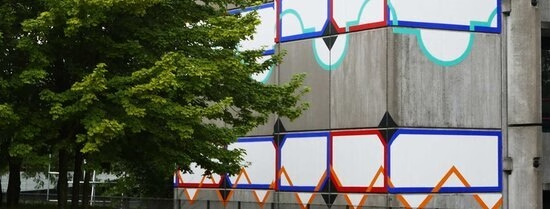How do artists address climate change in their art? Do these artists consider themselves as activists? And how do the media cover this art? A few questions that Ulrike Hahn Erasmus School of History, Culture and Communication) addresses in her PhD thesis. 'The arts can challenge dominant narratives, create emotional connections, and spark imagination. They play a vital role addressing the climate crisis, but the arts are no magic bullet.'

Why did you want to connect art and the climate crisis in your PhD?
'When I started writing my research proposal in 2018, this connection was underexplored academically, yet climate change itself is a major concern for people globally. The arts have the unique ability to challenge our usual thinking patterns through creativity. Visual arts are especially relevant because climate change is so often communicated visually—think of scientific figures and photographs. But art doesn’t just present information; it adds emotional and cognitive layers and provides aesthetic experiences.'
You interviewed many artists who work on climate-related themes. Why did you choose this approach?
'You can analyze art and make assumptions on why artists do the things they do, but instead it was very interesting to hear why and how they address climate change. It might seem straightforward as they want to stop climate change. But it would paint an incomplete picture if artists were seen as striving only for fast results and certain target audiences. While the artists did mention recurring audiences, especially a wide audience, politicians and younger audiences, the artists mainly value the process of making art. And some have narrower audiences in mind. One artist said, "If my work changes the perspective of just one person, that’s enough."
What also stood out was how they approach activism. About half of the artists I spoke with identified as activists, but their definitions of activism varied. For some, it meant creating loud statements. For others, it was about quiet reflection or subtle provocations. I realized that not all climate-focused art has a clear message or specific goal. And that’s okay. Some artists value the ambiguity and open-endedness of their work, which allows viewers to interpret it in their own way.'
'Not all climate-focused art has a clear message or specific goal. And that’s okay.'
Ulrike Hahn
PhD Candidate

You also looked at how the media portrays climate-related art. What did you discover?
'I analyzed articles from newspapers in four countries (the Netherlands, Germany, the UK, and the US). I identified four recurring narratives in the media: persuasiveness, timeliness, artistic quality, and accountability. Media often evaluates art based on whether it effectively communicates its message and whether that message is timely or urgent. But there’s also critique. Some articles questioned whether the art was truly sustainable or whether its messages were clear enough. Others asked, "Is this still art?"'
You went to an exhibition in Delft and asked visitors to participate in a survey. What did you find?
'I went to Radius, an art center in Delft with a focus on climate change and ecology. I approached visitors as they exited exhibitions on themes like the water crisis, asking them to complete a survey. What I found was that most visitors were already highly engaged with climate change, which wasn’t surprising. What stood out, though, was that even these informed individuals reported learning something new. This showed that art can deepen understanding and offer fresh perspectives, even for audiences who are already aware of the issues.'
'Art can deepen understanding of climate change and offer fresh perspectives'
Ulrike Hahn
Phd Candidate
Are there any artworks that made a lasting impression?
'Yes, definitely. One that really stood out was by the artist Susanne Kriemann, who photographed mangroves in Asia, which often trap pollution in their roots. She not only captured these striking images but also connects the waste to Europe, where much of it comes from and ends up entangled in the mangroves. Then, she brought some of that waste back to Europe as part of her exhibitions.
Another artist who left a lasting impression was Eve Mosher with her project HighWaterLine. She worked with communities to mark predicted flood lines in urban areas, showing where storms could cause flooding. In some cases, the flooding now already happened. She is also working on imagining beautiful futures, in the work Story of Tomorrow.'
You also mentioned challenges that artists face. Can you elaborate on those?
'A major challenge is sustainability. Artists who address socio-ecological topics seem to be held to a high standard—people expect them to work sustainably, which isn’t always easy. Financial sustainability was also a recurring theme, so how to make a living from art and survive over time.'
What’s your main takeaway from this research?
'My main takeaway is that art plays a vital role in addressing the climate crisis, but it’s not a magic bullet. It can challenge dominant narratives, spark imagination, and create emotional connections, which are all essential. However, we shouldn’t narrow art down to utilitarian functions or expect it to solve everything. Its strength lies in its diversity and its ability to provoke thought and dialogue, and not necessarily in offering straightforward solutions.'
- PhD student
- More information
Ulrike Hahn is researcher with a passion for exploring the intersections of art, climate change, and sustainability. She also creates her own artworks, including research-inspired comics. Take a look at her website and Instagram (@researchincomics) to learn more.
- Related content
